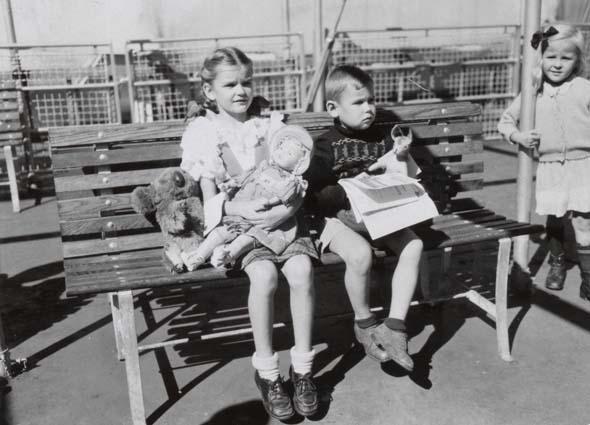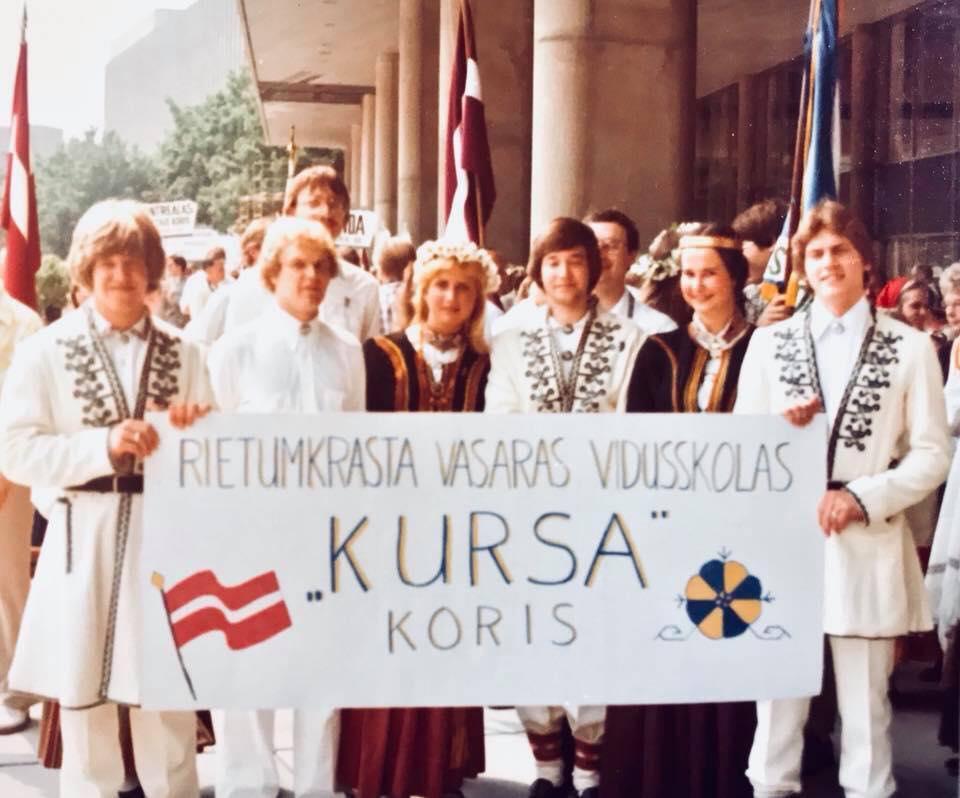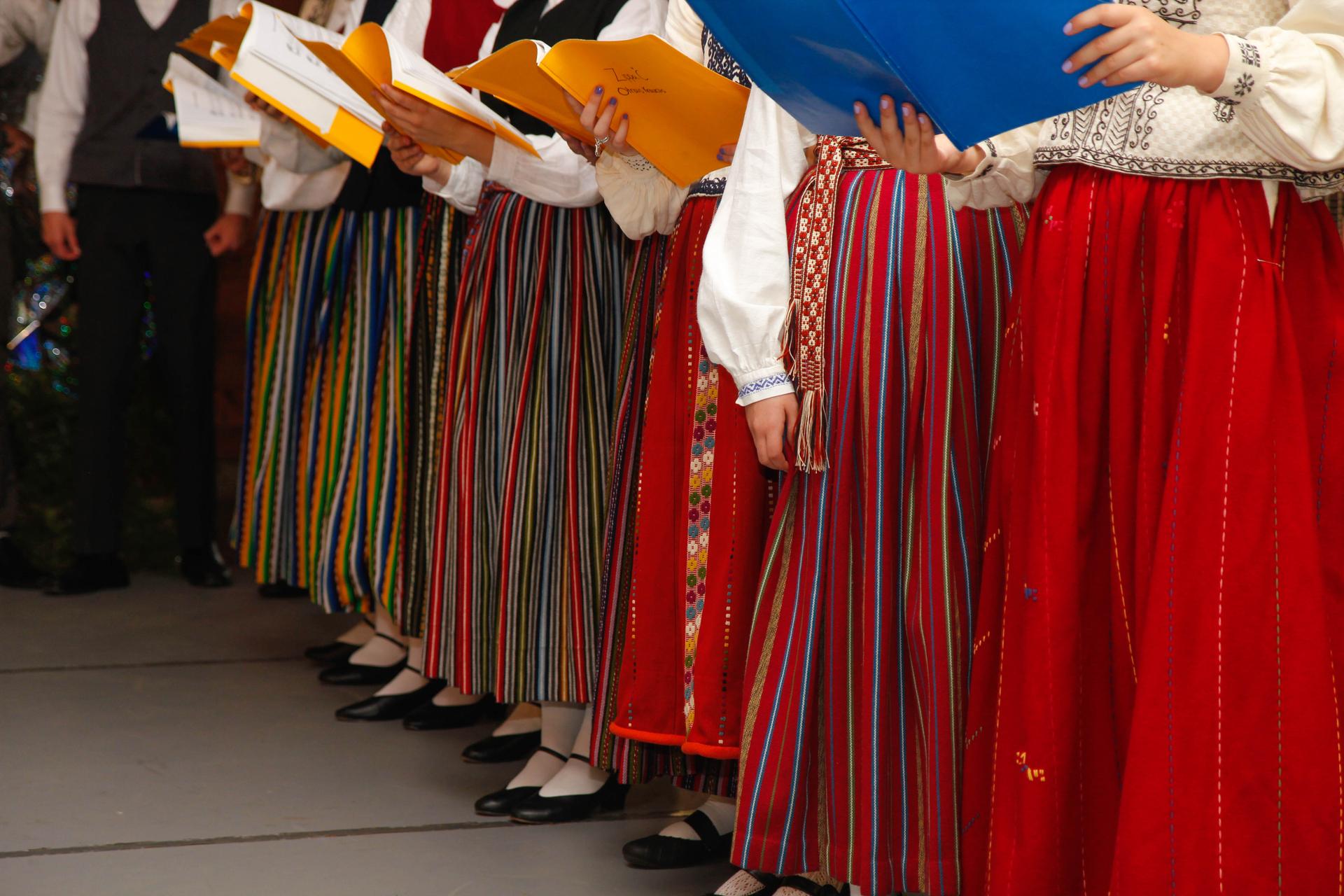Kursa summer high school students dress in traditional Latvian folk costumes for a performance for the local community in Washington state, Aug. 3, 2019.
A new academic year is kicking off around the world, but for some American teens, the end of summer brings a close to a different school experience — learning their immigration history and family language in heritage summer schools.
The vast majority of Americans have a family backstory that originates somewhere other than the US. With DNA home-test kits readily available, it’s become easier for people to learn about their ethnic ancestry. But living with hyphenated identities is something else — especially if your family is from a country that few people have ever heard of.
It’s something I think about often, with a family history partially rooted in Latvia, where I spent many childhood summers. I always have a boilerplate explanation about the country ready to go: “It’s in northern Europe on the Baltic Sea, about the size of West Virginia — south of Finland, north of Poland.” To which I add this caveat: “No, it’s not part of Russia, but it was occupied by the Soviet Union for 50 years. Now, it’s in the EU and NATO — you should visit!” I think it’s a standard reaction for those of us who flummox new acquaintances with our names or who have to clarify that we speak Latvian — not Latin.
Latvia has a population of just under 2 million — smaller than the Phoenix metro area where I grew up — but if you look hard enough, you can find diaspora community organizations scattered across the world. Some of the organizations are recent, following an uptick in emigration after Latvia joined the European Union in 2004. Others date back to the 1940s and ’50s, when the country became a battleground between Nazi Germany and the Soviet Union during World War II, and many families were forced to flee the occupying forces. After World War II, around 40,000 Latvian exiles ended up in the US under the Displaced Persons Act of 1948.
Related: Cuccinelli’s ‘bootstraps’ line reflects historical amnesia of ‘public charge’

It’s because of this emigration that I, born nearly half a century later, have spent a third of my summers at a place called Kursa, a Latvian summer high school in Washington state. I first arrived as a student, sent by my parents to learn the polka and the finer points of Latvian grammar. I fell in love with spending summers dancing and singing, and came back initially as a counselor. Now, I’m the director. Over more than 40 years, teens from the US, Canada, and sometimes even Latvia have spent their summer vacations here, learning the language, history and folk culture of their families. Similar camps exist in the Midwest and on the East Coast, too.
For many World War II refugees, keeping the culture of their homeland alive in their new countries was critical. Afraid that Soviet occupation would wipe out the language and folk traditions, they started organizations, churches and schools — places to maintain community for their children and grandchildren.
“Our parents gave us as much as they could,” said Dace Dābols, whose parents emigrated to the US from Pinneberg Displaced Persons Camp in Germany. “There were Latvian centers that we went to, Latvian school and folk dancing and different things.”
Dābols is among the first generation of students to attend Kursa in the 1970s and ’80s. Years later, her daughters also attended the school. Aija, 17, just graduated from Kursa this year.
“It warms my heart just to know that she had the same experience I did, even though so many years have passed in between.”
“It warms my heart just to know that she had the same experience I did, even though so many years have passed in between,” said Dābols, who lives in California. “Really, to come to Kursa and to feel the ‘Latvianism’ was, I think, just as important then as now, because it’s what you don’t have anywhere else.”
Places like Kursa are a product of intense community effort. The West Coast Latvian Education Center, where Kursa now takes place, was literally built by the community it serves, from fundraising dollar by dollar to pouring the foundation. The school started in 1973, while the center opened in 1982.

Kursa looks like your typical summer camp — there’s a lake, forest, rustic buildings and a big mess hall. But it’s in the details that you can see the difference. Names and years are scratched into the desks, but so are auseklīši and saulītes, ancient designs used in summer camp logos. Polka replaces square dance nights. And if you listen, it’s folk melodies that provide the summer soundtrack.
Viktors Pūpols has been teaching at Kursa for 30 years. He came to the US as a refugee, and said heritage schools like Kursa played a particularly valuable role during the Soviet occupation and the Cold War, when information exchanges between the West and the USSR were difficult.
Pūpols also said there was a sense of duty to maintain heritage schools like Kursa and others, like Germany’s Muenster Latvian Gymnasium.
“There was a Latvian language high school in western Germany. Many of the immigrants sent their kids there as soon as they could afford to do so. And the reason the German government supported the school was because it was made clear to them that if it had not been for Hitler and Stalin dividing Europe between them, they would not have these refugees on their hands.”
“There was a Latvian language high school in western Germany. Many of the immigrants sent their kids there as soon as they could afford to do so,” Pūpols said. “And the reason the German government supported the school was because it was made clear to them that if it had not been for Hitler and Stalin dividing Europe between them, they would not have these refugees on their hands.”
Related:30 years later, the human chain that ‘unshackled’ the Baltic nations still matters
Some refugees living in the West believed it was a responsibility to maintain the culture in exile, writes University of Minnesota sociologist Arta Ankrava. Others wanted to be ready to return when Latvia regained independence.
When that happened in 1991, most families had already settled for good in the US or other Western countries. But some from these communities did repatriate — Latvia’s first woman president, Vaira Vīķe-Freiberga, was a war refugee who settled in Canada and taught at Kursa. The current prime minister, Krišjānis Kariņš, was born in Delaware to refugee parents; he also attended Latvian summer school in the US.
Now, the pressure to “maintain” culture has lessened — Americans can travel to Latvia without visa restrictions, chat with family via WhatsApp and even spend time there learning the language or how to folk dance. But nearly 30 years after the Soviet Union collapsed, and 80 years after World War II, being Latvian in America still means something.
Dābols’ daughter, Aija, said being at a Latvian summer school has given her a community to come back to throughout her life.
“It’s a second home,” she said. “Wherever you are, when you’re with other people that share your love for this country and for how your family came from Latvia … there’s always going to be people who support you.”
Kursa is also my second home. For many of us, being Latvian in the US means knowing you have a community to fall back on — people who understand what it’s like to be connected to a small country, while also being part of a very big one. It’s like living “between two suns” — starp divām saulēm — or holding two identities. Then again, maybe that’s a shared trait among many Americans.
Editor’s note: A previous version of this piece noted that Krišjānis Kariņš attended a summer high school in Michigan, Garezers. Kariņš worked at Garezers, but was a student at the high school Beverīna, which has since closed.
